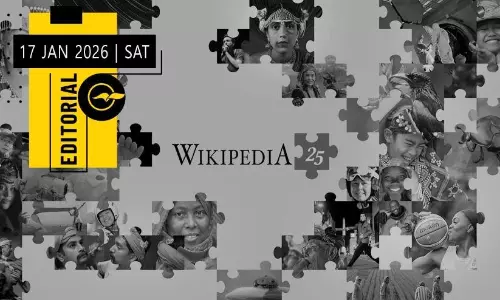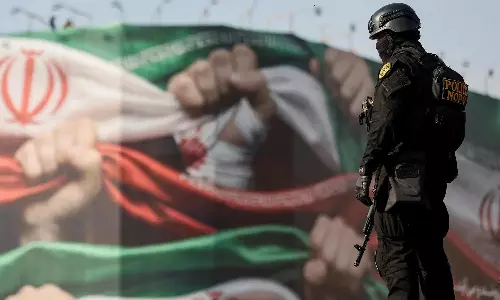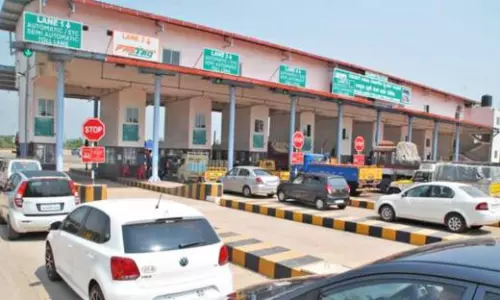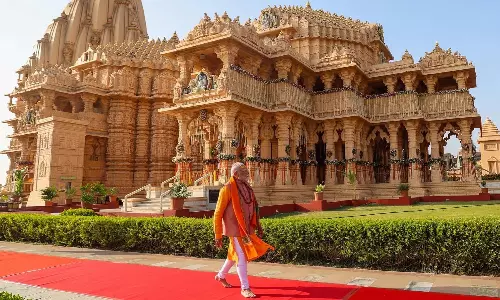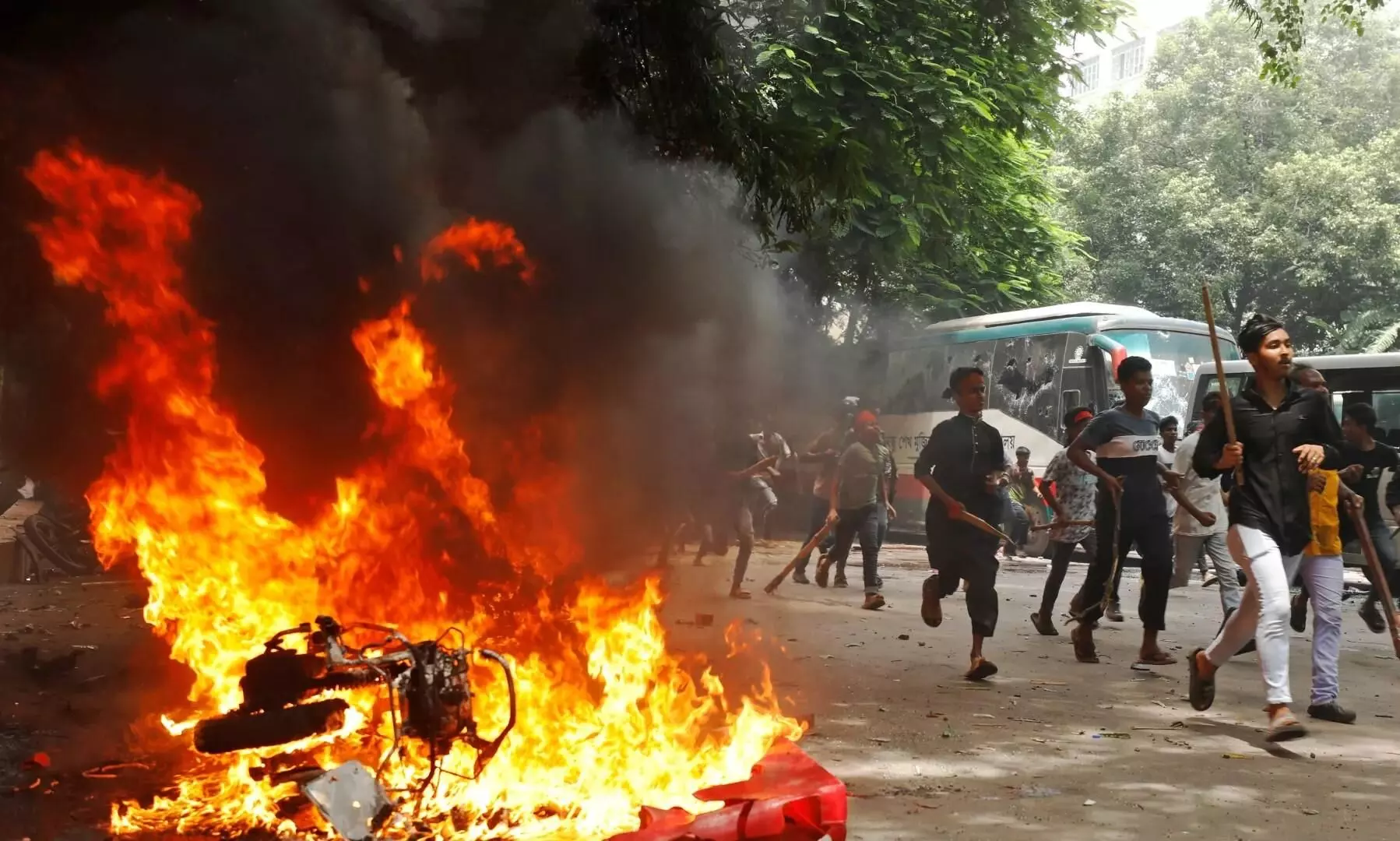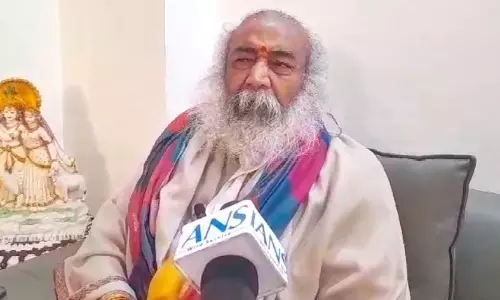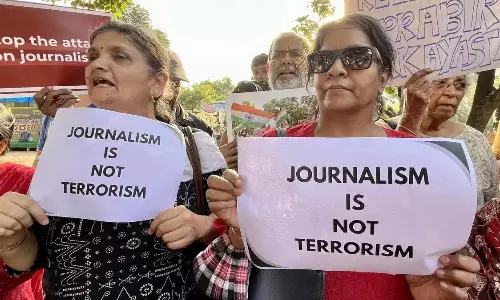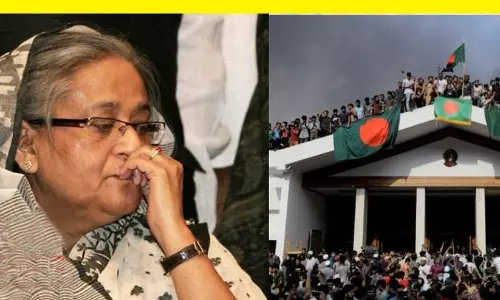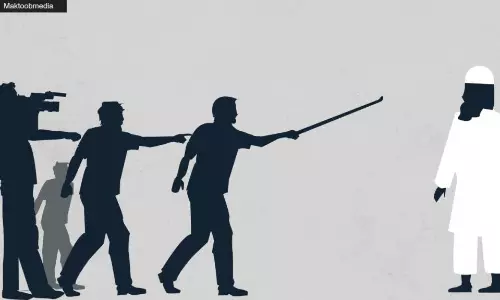
Indian media’s portrayal of Bangladesh uprising as anti-Hindu violence
text_fieldsIndian media's portrayal of the incidents leading to the ousting of Prime Minister Sheikh Hasina in Bangladesh has been fuelled by prejudice and Islamophobia, suggesting that there was an outright unleashing of terror against Hindu minorities in the country.
An Al Jazeera report on the news that had been on the air while the mutiny was going on in Bangladesh suggested that various Indian outlets showcased the surge of violence as being against Hindus, using false and misleading videos that depicted attacks on people identified as Hindus, while in reality, the victims were Muslims.
The upheaval began when Sheikh Hasina, who had been in power for over a decade, was ousted by widespread protests. The political turmoil has sparked a flurry of media activity, with some Indian media outlets broadcasting sensational and misleading narratives.
An Al Jazeera report pointed out an incident involving a video carried by The Times Group's Mirror Now, titled 'Attack on Hindus in Bangladesh? Mass Murders, Killings by Mob,' which showed footage of violence and arson but failed to substantiate claims of mass murder. The video erroneously identified some of the affected properties as belonging to Hindus when, in fact, they were owned by Muslims, including one associated with Bangladesh's national hero, Sheikh Mujibur Rahman.
Local reports have confirmed that only two Hindus have been killed since Hasina's departure: one was a police officer, and the other was an activist affiliated with Hasina’s Awami League party. Hindus, who make up about 8% of Bangladesh's population, have traditionally been supporters of the Awami League, a party known for its secular stance. The opposition coalition, including Islamist parties, has been portrayed in some Indian reports as a looming threat to Hindu safety.
Indian media coverage has also included dubious claims, such as the potential influx of millions of refugees into India and allegations of Pakistani and Chinese interference in Bangladesh’s internal affairs.
Some reports have suggested that the Inter-Services Intelligence (ISI) and Chinese entities were behind the protests to push Bangladesh towards an Islamist agenda. These speculations have contributed to a climate of fear and misinformation, especially in the context of rising anti-Muslim sentiment in India.
In contrast, independent verification and local reporting from Bangladesh indicate that the attacks on Hindu properties are largely politically motivated rather than driven by religious animosity. Many of the targeted Hindu homes were linked to local Awami League leaders, and similar violence has been reported against Muslim households associated with the same party. The current unrest appears to be a backlash against political figures rather than a systematic attack on religious minorities.
Further examination shows that Indian media reports have often misrepresented the scale and nature of the violence. For instance, Indian media claims of mass exodus and severe communal violence have been debunked by local sources, which report that the violence is largely confined to political retaliation. The reality on the ground suggests a complex situation where political dynamics, rather than purely religious or ethnic tensions, are driving the conflict.
In response to the media portrayal, many in Bangladesh have noted the protection extended by Muslims to Hindu communities. Reports from local sources and social media highlight instances of Muslims volunteering to guard Hindu temples and homes, countering the narrative of widespread communal violence.
Indian media's portrayal of the situation in Bangladesh has also been critiqued for its potential to stoke fear and prejudice, rather than offering a balanced view. Some analysts suggest that the sensationalist coverage may serve political agendas within India, particularly in the context of rising Hindu nationalism and anti-Muslim rhetoric. The narrative of an Islamist takeover and persecution of Hindus in Bangladesh may be seen as part of a broader strategy to advance certain political objectives in India.











